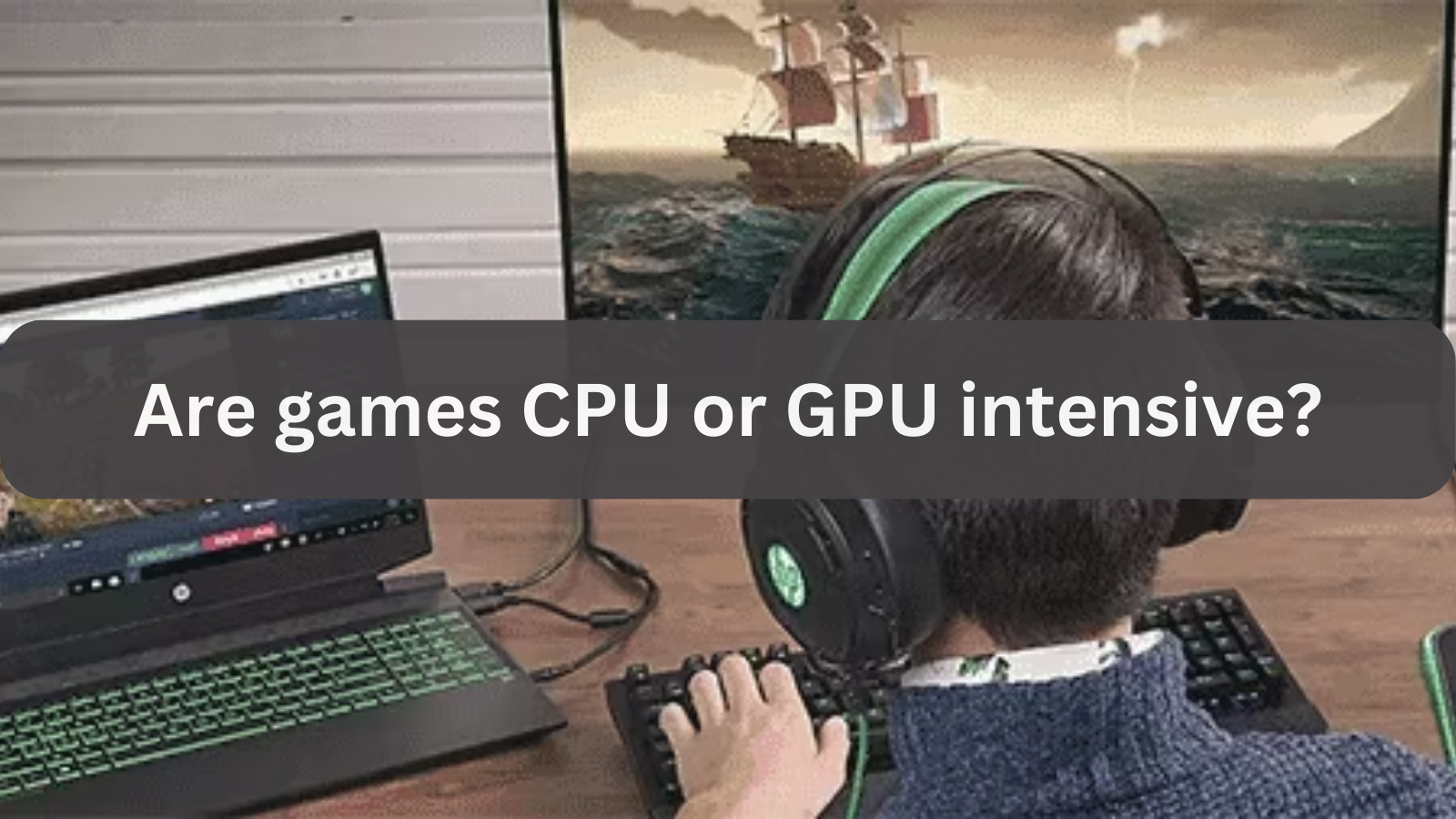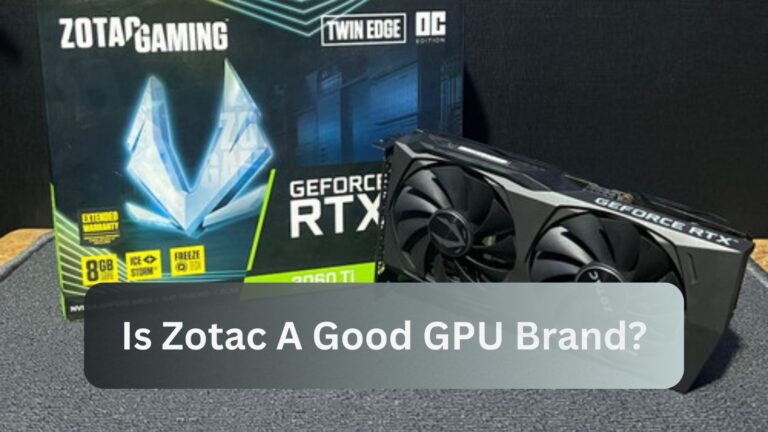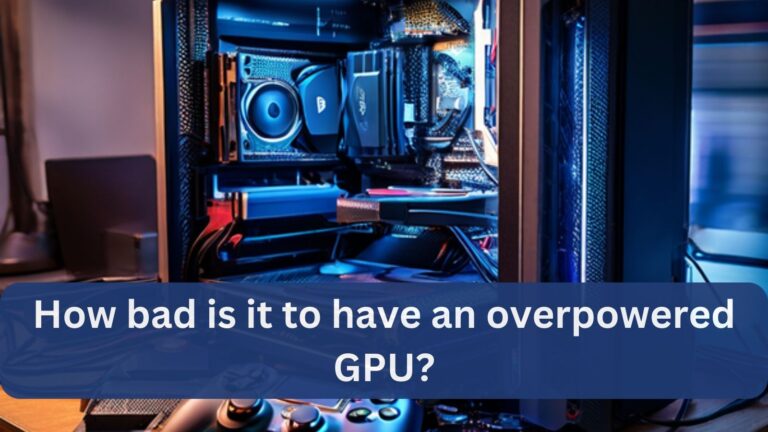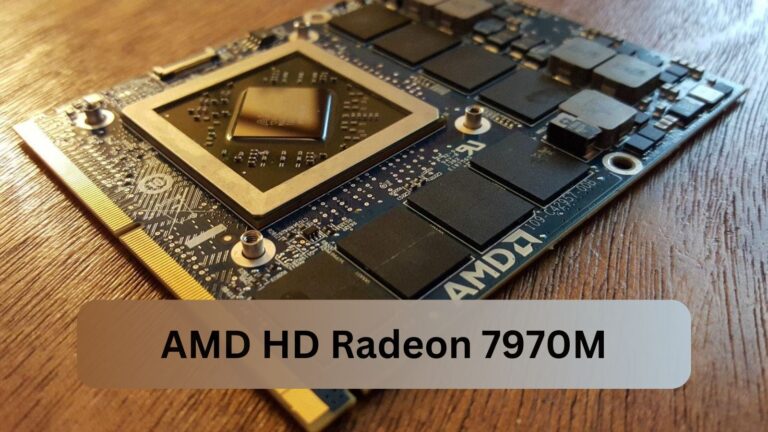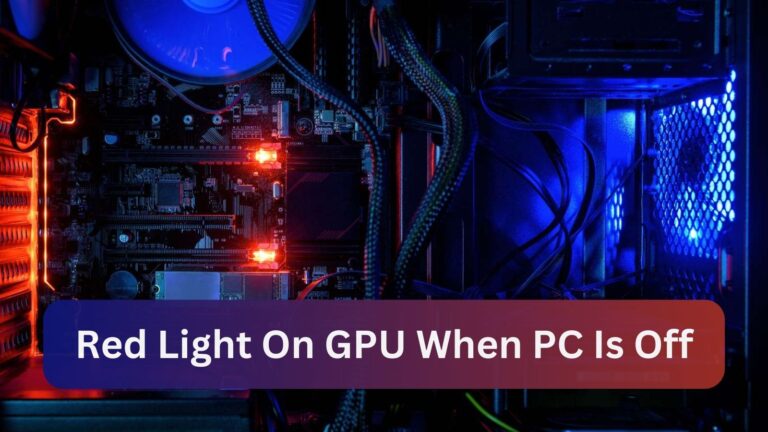Are games CPU or GPU intensive? Ultimate Guide – 2024
The demands of each game determine how well it runs. Some are CPU-intensive, needing a lot of processing power for intricate computations, while others are GPU-intensive, emphasizing high-definition graphics. Building or improving a system requires an understanding of your game’s requirements.
This article examines the elements that contribute to a game’s CPU or GPU intensity, describes the function of each part, and offers tips for system optimization to maximize gaming enjoyment.
Also Read: Can Overclocking Damage GPU?
What Does “CPU or GPU Intensive” Mean?
Whichever part of your computer is working harder while playing a game determines whether it is CPU-intensive or GPU-intensive. Although they play different roles, the CPU and GPU collaborate to offer the game experience.
1. CPU (Central Processing Unit):
The logic of the game, including AI behavior, physics computations, environment interactions, and network communications, is handled by the CPU. Fast, multi-core processors are frequently needed for CPU-intensive games to accomplish these demanding activities.
2. GPU (Graphics Processing Unit):
The graphics of the game, including the textures, lighting, shadows, and animations, are rendered by the GPU. High-end graphics cards are necessary for GPU-intensive games in order to depict detailed scenes at greater resolutions and faster frame rates.
You can decide which component of your system is more crucial for the kinds of games you play by being aware of the functions of the CPU and GPU.
How Games Use the CPU
It’s common to refer to the CPU as your computer’s brain. In terms of gameplay, the following are the responsibilities of the CPU:
1. Game Logic
All of the computation for the game’s dynamics, including collision detection, object interactions, and rule compliance, is done by the CPU. For instance, the CPU manages hundreds of intricate computations involving AI opponents, pathfinding, and world management in strategy games like Civilization VI.
2. AI (Artificial Intelligence)
Games with a large number of AI-controlled characters are CPU-intensive. The CPU must determine how adversaries, NPCs (non-player characters), and other interacting elements in the game environment will behave, for instance, in role-playing or strategic games.
3. Physics Calculations
The CPU is also in charge of doing physics computations, which determine how different things react to one another. The CPU manages these crucial in-game physics, such as how a ball bounces in Rocket League and how bullets fly through the air in first-person shooters.
4. Multithreading
Multiple cores are a common feature of modern CPUs, enabling them to do multiple tasks simultaneously. Multithreaded games can make better use of all available cores, resulting in improved performance.
How Games Use the GPU
Everything pertaining to rendering and showing the game on your screen is handled by the GPU, or graphics card. It covers every visual element of the game, including:
1. Rendering Graphics
Rendering visuals is the GPU’s main function. It handles lighting effects, shaders, and textures to make sure the game’s graphics are as good as they can be.
Read Also: What Is Idle GPU Temperature?
2. Resolution and Frame Rate
Since there are more pixels to produce at higher resolutions like 1440p or 4K, more GPU power is needed. In a similar vein, greater frame rates (such as 144 FPS) necessitate faster GPU frame rendering.
3. Graphics Effects

The GPU is responsible for handling advanced graphical effects including ambient occlusion, ray tracing, and anti-aliasing. These effects add realism to games, but they also use a significant amount of graphical processing power.
4. VR (Virtual Reality)
Even more so with VR gaming, the GPU is essential. To prevent motion sickness, it must render two images simultaneously, one for each eye, and keep a high frame rate.
Types of Games: CPU vs. GPU Intensive
Not every game uses the CPU and GPU to the same extent. While some rely primarily on the CPU, others rely mainly on the GPU. Let’s examine the differences between typical CPU- and GPU-intensive games.
CPU-Intensive Games
Some game genres demand a high processing power. These games frequently incorporate AI, in-game logic, and intricate simulations. The primary genres of CPU-intensive games are as follows:
1. Strategy Games
Some of the most CPU-intensive games are Total War: Warhammer, StarCraft II, and Civilization VI. Deep simulations, massive battles, and sophisticated AI decision-making are common features of these games. There is a significant strain on the CPU because it must calculate the motions and actions of thousands of units.
2. Simulation Games
Games such as Microsoft Flight Simulator and Cities: Skylines require the CPU to continuously compute the interactions between many parts. For instance, the CPU handles resource management, population growth, and traffic flow in city-building games.
3. MMORPGs (Massively Multiplayer Online Role-Playing Games)
Because of the large number of players participating in a shared world, intricate in-game systems, and AI-controlled monsters, games like World of Warcraft and Final Fantasy XIV require a lot of processing power.
4. Physics-Heavy Games
BeamNG.drive and Kerbal Space Program are two examples of physics-based games that depend on the CPU to compute object physics in real-time. This can be really taxing, particularly if you’re working with intricate simulations or lots of moving elements.
GPU-Intensive Games
However, GPU usage is typically higher in games that emphasize realistic lighting effects, expansive open environments, or high-quality graphics. The kinds of GPU-intensive games are as follows:
Read More: Are GPU Fans Intake Or Exhaust?
1. First-Person Shooters (FPS)
For games like Valorant, Battlefield V, and Call of Duty: Modern Warfare to depict their fast-paced, visually complex settings, a strong GPU is necessary. Delivering high frame rates at higher resolutions requires the GPU, particularly in competitive gaming where fluid graphics are crucial.
2. Open-World Games
Wide-open, intricate landscapes are a hallmark of games like Cyberpunk 2077, The Witcher 3, and Red Dead Redemption 2. The GPU is put to the test rendering realistic lighting, environmental effects, and high-quality textures in these titles.
3. Racing Games
Highly detailed scenery and automobiles are a characteristic of racing games like Project Automobiles 3 and Forza Horizon 5, which demand a powerful GPU to maintain great visual fidelity and quick frame rates.
4. VR Games
VR games, as previously discussed, are very taxing on the GPU. For realistic, immersive landscapes to be rendered at high frame rates in games like Beat Saber or Half-Life: Alyx, a powerful GPU is required.
How to Tell if a Game is CPU or GPU Intensive
Determining whether a game is more CPU- or GPU-intensive might be difficult at times. The following methods can be used to determine which element a game depends on:
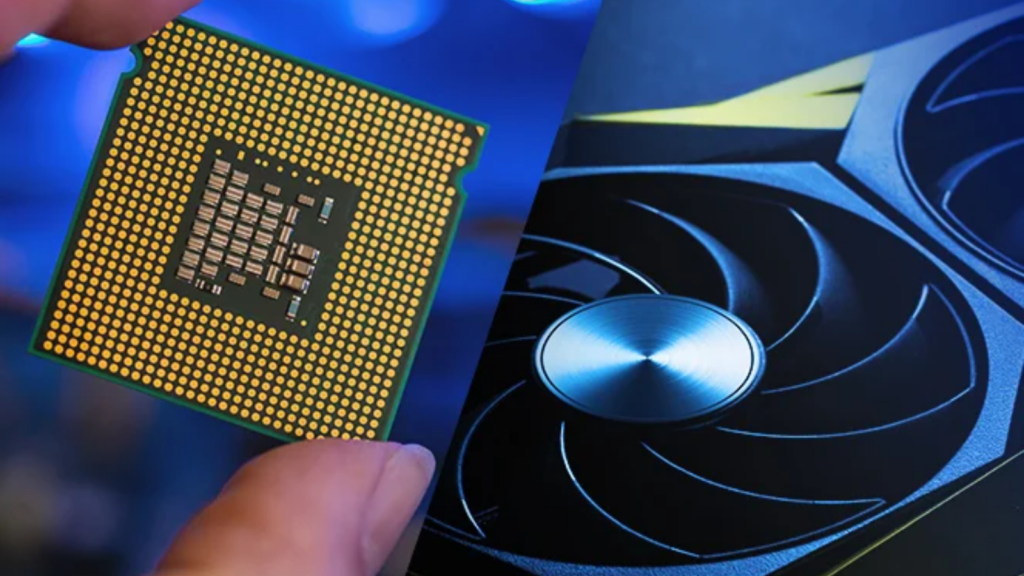
1. Monitor Usage
Task Manager (Windows) and Activity Monitor (Mac) are two applications that let you view how much of your CPU and GPU are being used when playing. A game is considered CPU-intensive if its CPU consumption exceeds its GPU usage, and vice versa.
2. Check System Requirements
On their website or game store page, game creators frequently provide the minimum and recommended system requirements. You can determine which part of the system is more crucial for the game by comparing the specifications necessary for the CPU and GPU.
3. Frame Rate Drops
Your GPU can be the bottleneck if your frame rate dips in visually demanding scenes (such as explosions or extremely detailed environments). Your CPU might be the limiting issue, though, if your frame rate decreases when there are a lot of AI-controlled characters or physical interactions.
How to Optimize Your PC for Gaming
Upon ascertaining if your preferred games are heavy on the CPU or GPU, you can proceed to tweak your system to get optimal performance.
1. Upgrade Your CPU or GPU
Upgrade to a faster CPU with additional cores if your games require a lot of processing power. Upgrading to a newer or more powerful graphics card will produce better results for games that use a GPU.
Read Also: What GPU Can Run 240hz?
2. Adjust Game Settings
Your GPU’s workload can be decreased by lowering in-game settings for things like resolution, texture quality, shadows, and anti-aliasing. Reducing the amount of NPCs or disabling AI-heavy features can help with CPU-intensive games.
3. Overclocking
Increasing the clock speed of your CPU or GPU can improve performance. However only experienced users should attempt this, as improper execution can result in instability or overheating.
CPU and GPU Recommendations for Gaming
Depending on whether you play more CPU-intensive or GPU-intensive games, the following general recommendations for CPUs and GPUs apply:
1. CPU Recommendations
Entry-Level:
Core i3-10100 from Intel or AMD Ryzen 3 3200G
Mid-Range:
Intel Core i5-10600K or AMD Ryzen 5 3600
High-End:
Intel Core i7-11700K or AMD Ryzen 7 5800X
2. GPU Recommendations
Entry-Level:
AMD RX 550 or NVIDIA GTX 1650
Mid-Range:
AMD RX 5600 XT or NVIDIA GTX 1660 Super
High-End:
AMD RX 6800 XT or NVIDIA RTX 3080
Balancing the CPU and GPU for Optimal Performance
It’s crucial to maintain a balance between the power of your CPU and GPU for optimal gameplay. When the GPU is not being fully utilized due to the CPU being too weak in comparison, a CPU bottleneck arises. On the other hand, a GPU bottleneck restricts the frame rate and visual quality when the GPU is overly underpowered in relation to the CPU.
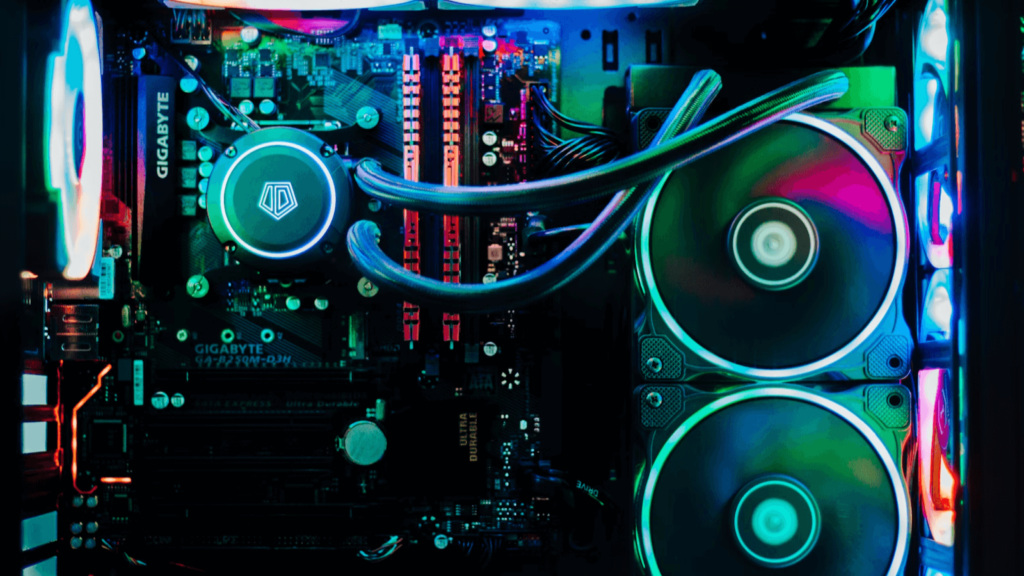
Aim for performance parity between your CPU and GPU to prevent bottlenecks. For instance, utilizing a high-end CPU with an entry-level GPU might not produce the finest visuals, while matching a high-end GPU, such as the NVIDIA RTX 3080, with a mid-range CPU would result in underperformance.
Also Read: What is a good GPU percentage?
Frequently Asked Questions FAQ’s:
Q.1 Are open-world games more CPU or GPU-intensive?
Since open-world games must render large, intricate settings, they usually require greater GPU power. Large-scale simulations in these games, nevertheless, can also tax the CPU.
Q.2 Can a strong GPU make up for a weak CPU?
A weak CPU cannot be entirely made up for by a powerful GPU. The CPU will continue to be the performance bottleneck in CPU-intensive games, reducing overall smoothness and frame rate.
Q.3 Is VR gaming more CPU or GPU-intensive?
Because the GPU must render two pictures simultaneously—one for each eye—at a high frame rate to ensure a smooth experience, VR gaming is typically more GPU-intensive.
Q.4 Should I prioritize the CPU or GPU for gaming?
The element that should come first varies depending on the kind of games you play. A better CPU will enhance performance in games that require a lot of processing power, such as strategy or simulation. A more powerful GPU will result in better graphics and more fluid gameplay for GPU-intensive games like shooters and open-world titles.
Read More: Can I Use 6+2 Pin For 8 Pin GPU?
Conclusion
Do games use a lot of CPU or GPU resources? It depends on the kind of game you’re playing on the response. GPU-intensive games put more emphasis on visual rendering, resolution, and frame rates than CPU-intensive games do on logic, AI, and physics computations.
You may construct a gaming rig that runs at peak performance or improve your system by figuring out which components your games depend on the most. Finding the ideal balance between your CPU and GPU will guarantee that you get the most out of your gaming experience, whether you’re taking on AI in a strategy game or venturing through an open-world role-playing game.
